History
- Archimedes of Syracuse
- Aristotle
- Thomas Bayes
- Brahmagupta
- Chen Jingrun
- John Horton Conway
- Rene Descartes
- Euclid of Alexandria
- Leonhard Euler
- Pierre de Fermat
- Joseph Fourier
- Galileo Galilei
- Carl Friedrich Gauss
- Kurt Gödel
- Hypatia of Alexandria
- Katherine Johnson
- Pierre-Simon Laplace
- Gottfried Leibniz
- Liu Hui
- Ada Lovelace
- Sir Isaac Newton
- Emmy Noether
- Blaise Pascal
- Plato
- Pythagoras of Samos
- Alan Turing
- Zu Chongzhi
Archimedes of Syracuse
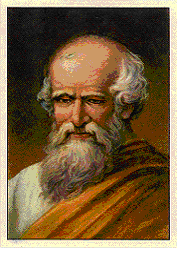
Archimedes was a Greek mathematician, physicist, engineer, inventor and astronomer. He was born in 287 BC in Syracuse, Sicily. Even though few details of his life are known, Archimedes is generally considered to be the greatest mathematician of antiquity and one of the greatest of all time. He invented a pump for raising water from a river and a parabolic "burning mirror", which were used to focus the sun's rays on attacking wooden ships, thereby setting them on fire.
Perhaps one of the most famous stories about him is that of his discovery of the principle of buoyancy. Buoyancy is an upward force exerted by a fluid (like water) that works to either keep objects afloat or slow their descent into the fluid. History states that Archimedes discovered the buoyancy principle while bathing and was excited that he ran naked into the street shouting "Eureka!".
Archimedes is also credited with the development of some of the ideas of calculus, nearly 2000 years before its creation by Sir Isaac Newton and Gottfried Leibniz; He is also recognized for his remarkable and accurate approximation of pi (π).
In his work "The Sand Reckoner", Archimedes set out the impossible task of calculating the number of sand grains the universe could contain. He challenged that it was not impossible to do, even if sand grains were too small or too many to be counted. To solve the problem of sand grains, Archimedes invented a system based around the myriad or "uncountable" in Greek (It is also denoted 10,000 in the Greek number system). He fixed a number system using powers of a myriad of myriads (10 000 x 10 000 = 100 million) and finally calculated the number of sand grains in the universe as 8 x 1063 grains. Archimedes died in 212 B.C. in Syracuse.
Sources:
Musser, Gary. Burger, William. Peterson, Blake. Mathematics For Elementary Teachers: A Contemporary Approach, 6th ed.; Wiley.
Burton, D.M. The History of Mathematics: An Introduction, 5th ed.; McGraw-Hill: New York, 2003.
http://www.ancientgreece.com/s/People/Archimedes/
http://en.wikipedia.org/wiki/Archimedes>
Aristotle
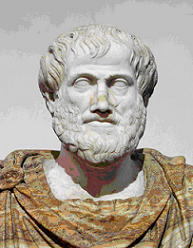
Aristotle was a Greek philosopher who was born in 384 BC and died in 322 BC. He studied almost every subject possible at the time as well as contributed to a majority of them. He is well known to be the last person to know everything that there was to be known - what was known at that time, at least. Aristotle's contribution to mathematics lie in the logic field. For example, the fact that "all humans are mortal" and "all Greeks are humans" allowed him to conclude that "all Greeks are mortal," thus discovering what are now called validity rules. He also opened a school called the Lyceum. He taught several courses there for twelve years following its opening day. A large amount of his work is lost.
Sources:
http://www.edu.pe.ca/kish/Grassroots/math/aristotl.htm
http://en.wikipedia.org/wiki/Aristotle
Thomas Bayes
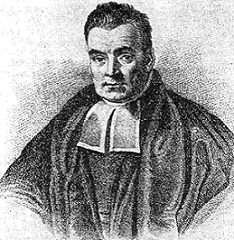
Thomas Bayes, born in 1701, was an English mathematician and a Presbyterian minister. He formulated a theorem called Bayes' theorem about inverse probability. One often thinks about being given how many red and blue marbles are in a box and being asked to calculate the probability of picking a blue marble whereas Bayes was interested in being given the probability of picking a blue or red marble from a box and having to calculate how many red and blue marbles were in the box. Interestingly and unfortunately enough, his most famous accomplishment lay in his rough notes which were edited and published by Richard Price shortly after Bayes' death.
Sources:
http://en.wikipedia.org/wiki/Thomas_Bayes
Brahmagupta
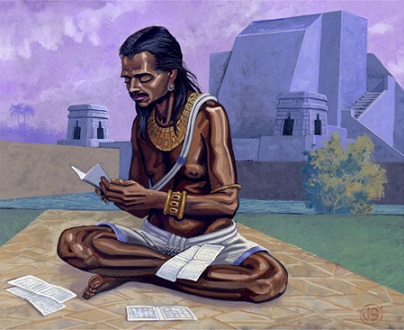
Brahmagupta was one of the greatest 7th century Indian mathematicians and astronomers. He was from the state of Rajasthan of northwest India. One of the topics he considered are whole number solutions of what today are called Pell’s equations like x2 − 92y2 = 1, and said, “[a person solving this problem] within a year [is] a mathematician.”
Brahmagupta explained how to find the cube and cube-root of an integer and found explicit formulas for the sum of the squares of the first n natural numbers and the sum of the cubes of the first n natural numbers. His biggest contribution, however, was his treatment of the (then relatively new) number zero. He came up with rules to add, subtract, and multiply numbers by zero. His “Brahmasphutasiddhanta” is the earliest known text to acknowledge zero as a number rather than just a placeholder digit or a symbol representing a lack of quantity.
Sources:
https://www.storyofmathematics.com/indian_brahmagupta.html
Chen Jingrun
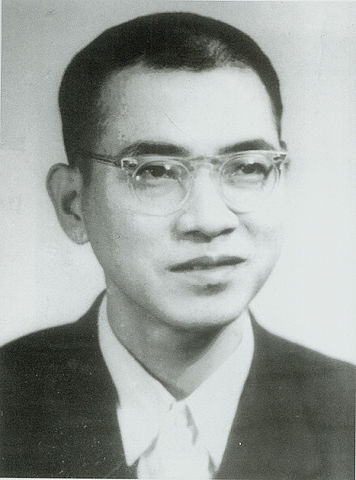
Chen Jingrun (May 22, 1933 – March 19, 1996) was a Chinese mathematician who made significant contributions to number theory. His work on the twin prime conjecture, Waring's problem, Goldbach's conjecture and Legendre's conjecture led to progress in analytic number theory. In a 1966 paper he proved what is now called Chen's theorem: every sufficiently large even number can be written as the sum of a prime and a semiprime (the product of two primes) – e.g., 100 = 23 + 7·11.
Sources:
https://en.wikipedia.org/wiki/Chen_Jingrun
John Horton Conway
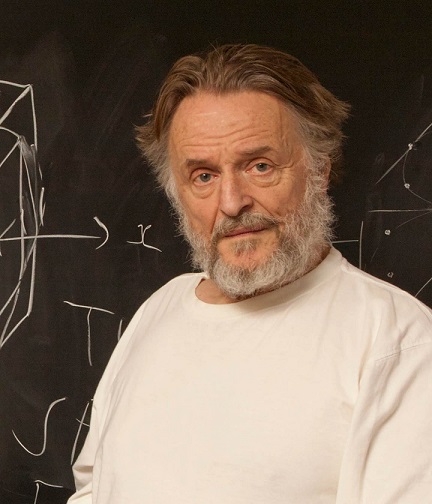
John Horton Conway FRS (26 December 1937 – 11 April 2020) was an English mathematician active in the theory of finite groups, knot theory, number theory, combinatorial game theory and coding theory. Many of Caribou’s Interactive Games have been influenced by his research, including combinatorial games like Hackenbush or Chomp, Sliding Blocks, and a knot game currently under development.
Conway also made contributions to many branches of recreational mathematics, most notably the invention of a two-dimensional cellular automaton called the Game of Life, helping to launch a whole new field of mathematics with applications in computer science, physics, and theoretical biology. In cellular automata, one studies the behaviour of a finite grid of cells wherein each cell has one state among a finite number of states at each point in time, and where the state of each cell changes as time progresses according to some set of rules, typically a mathematical function. He is also known for the discovery of surreal numbers.
Born and raised in Liverpool, by age 11 Conway aspired to become a mathematician. He spent the first half of his career at the University of Cambridge before moving to the U.S. state of New Jersey, where he held the title of John von Neumann Professor Emeritus at Princeton University for the rest of his career, retiring in 2013. On 11 April 2020, at age 82, he died of complications from COVID-19.
Sources:
https://en.wikipedia.org/wiki/John_Horton_Conway
https://en.wikipedia.org/wiki/Cellular_automaton
Rene Descartes
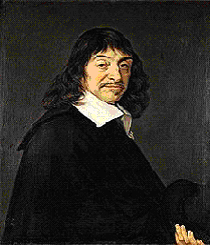
Rene Descartes was a French philosopher and mathematician born on March 31 1596 in Touraine, France. Descartes has been credited the "Father of Modern Philosophy" and the "Father of Analytical Geometry", which is the branch between algebra and geometry. Before Descartes' time, the subjects of algebra and geometry had developed in parallel tracks, until he developed a method of joining them. This important contribution allowed Descartes, alongside Newton and Leibniz, to provide the foundations of modern calculus. The coordinate system used today in analytic geometry is called the Cartesian coordinate system in his honor.
Descartes' analytical geometry was designed to study the mathematical attributes of lines and curves by representing them via equations. One of the most important contributions Descartes made were his philosophical writings. Descartes, who was convinced that science and mathematics could be used to explain everything in nature, was the first to describe the physical universe in terms of motion and matter, seeing the universe as a giant mathematically designed engine.
Rene Descartes wrote three important texts: (1) Discourse of the Method of Rightly Conducting the Reason and Seeking Truth in the Sciences, (2) Meditations on First Philosophy, and (3) Principles of Philosophy.
Descartes had always been a fragile individual, he would often spend most of his mornings in bed, where he did most of his thinking, fresh from dreams in which he often had his revelations. In his later years, Descartes had to relocate to Sweden to tutor Queen Christina in philosophy. Unfortunately, the Queen was an early riser who wanted her lessons at 5:00 o'clock in the morning. This schedule did not help Descartes fragile health. He contracted pneumonia, from which he died on February 11, 1650 at the age of 54.
Descartes' Famous preposition: Cogito ergo sum - "I think, therefore I am."
Sources:
Burton, D.M. The History of Mathematics: An Introduction, 5th ed.; McGraw-Hill: New York, 2003.
http://plato.stanford.edu/entries/descartes/
http://www.iep.utm.edu/descarte/
Musser, Gary. Burger, William. Peterson, Blake. Mathematics For Elementary Teachers: A Contemporary Approach, 6th ed.; Wiley.
https://en.wikipedia.org/wiki/Ren%C3%A9_Descartes
Euclid of Alexandria
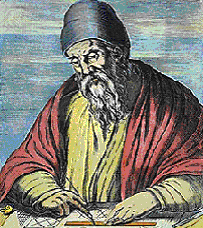
Euclid was a Greek mathematician, and often referred to as the "Father of Geometry", born in about 325 BC. Little is known about Euclid's life, as there are only a handful of references to him. The date and place of Euclid's birth and the date and circumstances of his death are unknown and only roughly estimated in proximity to contemporary figures mentioned in references. The few historical references to Euclid were written centuries after he lived, by Proclus and Pappus of Alexandria. Very little is known of Euclid's life except that he taught in Alexandria. In his book Elements, Euclid deduced the principles of what is now called Euclidean geometry. Euclid died in 265 BC in Alexandria, Egypt.
Sources:
Musser, Gary. Burger, William. Peterson, Blake. Mathematics For Elementary Teachers: A Contemporary Approach, 6th ed.; Wiley.
Burton, D.M. The History of Mathematics: An Introduction, 5th ed.; McGraw-Hill: New York, 2003.
http://www.businessinsider.com/important-mathematicians-modern-world-2012-7?op=1
https://en.wikipedia.org/wiki/Euclid
Leonhard Euler
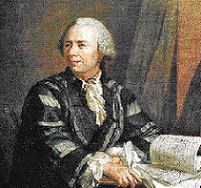
Leonard Euler was a pioneering Swiss mathematician and physicist born on April 15 1707 in Basel, Switzerland. He made remarkable contributions to the fields of infinitesimal calculus and graph theory. Euler also introduced much of the modern mathematical terminology and notation, particularly for mathematical analysis, such as the notion of mathematical functions. For example, the modern use of the symbol π is due to Euler.
In geometry, he is best known for the Euler line of a triangle and the formula F + V = E + 2. In this formula, Euler relates the number of faces (F), vertices (V) and edges (E) of a polyhedron in a three-dimension space.
Early in his career, Euler lost sight in his right eye, most probably due to overwork. He published more than 500 books and papers during his lifetime, and it has been computed that his publications during his working life averaged about 800 pages a year. From 1771 on, he was totally blind, yet his mathematical discoveries continued. He would work mentally, and then dictate to assistants, often times using a large chalkboard on which to write the formulas for them.
Euler also derived the base of the natural logarithm with e, also known as Euler's number, as a mathematical constant approximately equal to 2.71828. e is the limit of (1 + 1/n)n as n approaches infinity.
Euler died in 1783 at the age of 76 still active to the end.
Sources:
Musser, Gary. Burger, William. Peterson, Blake. Mathematics For Elementary Teachers: A Contemporary Approach, 6th ed.; Wiley.
http://www.businessinsider.com/important-mathematicians-modern-world-2012-7?op=1
Pierre de Fermat
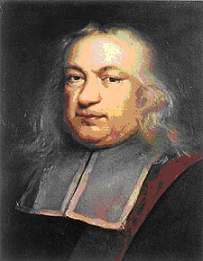
Pierre de Fermat, born on August 17, 1607, was a French lawyer and an amateur mathematician who contributed work that ultimately led to infinitesimal calculus, including his adequality technique. Fermat and René Descartes were the two leading mathematicians of the beginning of the 17th century. He is best known for Fermat's Last Theorem, which is that "no three positive integers a, b, and c can satisfy the equation an + bn = cn for any integer value of n greater than two".
Fermat wrote his Last Theorem in the margin of a book. He claimed that he didn't have room to write a proof of the theorem. The proof was unable to be found for over 350 years since other mathematicians were unable to deduce it. Andrew Wiles tried and failed to prove it, but later succeeded alongside Richard Taylor.
Sources:
Musser, Gary. Burger, William. Peterson, Blake. Mathematics For Elementary Teachers: A Contemporary Approach, 6th ed.; Wiley.
http://en.wikipedia.org/wiki/Pierre_de_Fermat
Joseph Fourier
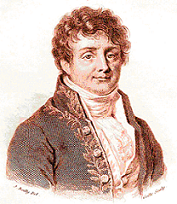
Joseph Fourier, born March 21, 1768, was a French mathematician and physicist. He was orphaned at age nine and accepted a military lectureship on mathematics after being educated, contributing many mathematics papers to the Egyptian Institute. Napolean Bonaparte appointed Fourier as Prefect (Governor) of the Department of Isère in Grenoble where he supervised construction projects after resuming his academic post as professor at école Polytechnique. He is best known for discovering the Fourier series and their applications to various problems in the topics of heat transfer and vibrations. The Fourier transform and Fourier's Law are also named in his honour. He is also credited with the discovery of the greenhouse effect.
Sources:
http://scienceworld.wolfram.com/biography/Fourier.html
http://en.wikipedia.org/wiki/Joseph_Fourier
Galileo Galilei

Galileo Galilei was born on February 15, 1564 in Pisa, Italy. He is well known as the first modern scientist. His father wanted him to study medicine, so Galileo enrolled in the University of Pisa to do so but dropped out shortly after to pursue his passion in both mathematics and mechanics. Among his many contributions to mathematics, he devised and improved a Geometric and Military Compass. He also understood the parabola extremely well. Galileo was offered the position of a chair in mathematics at the University of Padua, which he gratefully accepted and worked for eighteen years as one.
Galileo was found to be a suspect of heresy since he believed that the Sun stays still at the centre of the universe, whereas Earth does not stay still nor is it at the centre of the universe. This belief contrasted to Holy Scripture. He was sentenced to formal imprisonment, and then was commuted to house arrest for the remainder of his life - not being allowed to publish any of his works from then on. He then died on January 8, 1642 after suffering from fever, heart palpitations and more. He wished to be buried alongside his father, but was denied this wish by the Church because of the crime he was accused for.
Sources:
http://math.berkeley.edu/~robin/Galileo/life.html
http://en.wikipedia.org/wiki/Galileo_Galilei
Carl Friedrich Gauss
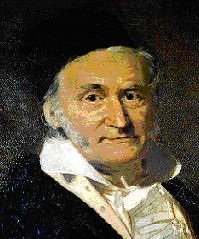
Carl Gauss was a German mathematician and physicist born on April 30 1777 in Braunschweig, Holy Roman Empire. Often times referred to as the Princeps mathematicorum (Latin for "The Prince of Mathematicians"), Gauss had a remarkable influence in many fields of mathematics including number theory, algebra, statistics, analysis, and differential geometry. He referred to mathematics as "the queen of sciences".
There are several stories about Gauss at a very young age. According to one, his gifts became evident when at the age of three he mentally and without fault in his calculations, corrected an error that his father had made on paper while calculating finances. Another famous story tells that in primary school, after the young Gauss misbehaved, his teacher, J.G. Büttner, gave him the task of adding a list of integers from 1 to 100, in arithmetic progression. The young Gauss apparently produced the correct answer within seconds, to the astonishment of his teacher and his assistant Martin Bartels. Gauss method was based on a pairwise addition of terms from opposite ends of the list, which gave identical intermediate sums. For example: 1 + 100 = 101, 2 + 99 = 101, 3 + 98 = 101, and so on, for a total sum of 50 x 101 = 5050.
At the age of 18, Gauss devised a method for constructing a 17-sided regular polygon, using only a compass and a straightedge. Remarkably, he then derived a general rule that predicted which regular polygons are similarly constructible. In 1807 he became the director of the astronomical observatory at Gottingen, Germany, where he served until his death. Gauss died on February 25, 1855.
Sources:
Musser, Gary. Burger, William. Peterson, Blake. Mathematics For Elementary Teachers: A Contemporary Approach, 6th ed.; Wiley.
http://en.wikipedia.org/wiki/Carl_Friedrich_Gauss#Anecdotes
Kurt Gödel
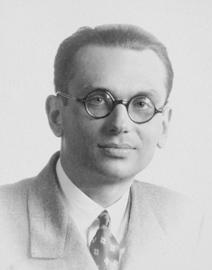
Kurt Friedrich Gödel, born on April 28, 1906, was an Austrian logician, mathematician, and philosopher. Considered alongside Aristotle and Frege to be one of the most important logicians known, he made a significant impact upon scientific and philosophical thinking in the 20th century by publishing his two incompleteness theorems when he was just 25 years old, only a year after finishing his doctorate at the University of Vienna. Gödel developed a technique called Gödel numbering to prove the first theorem, which codes formal expressions as natural numbers. He also clarified the relations between classical, intuitionistic, and modal logic.
When Gödel aged, he suffered periods of both mental instability and illness. He was obsessively paranoid of being poisoned, leading him to only eat food that his wife served him. When he was hospitalized for 6 months and unable to care for him, Gödel refused to eat and starved to death because of it.
Sources:
http://www-history.mcs.st-and.ac.uk/Biographies/Godel.html
http://en.wikipedia.org/wiki/Kurt_Godel
Hypatia of Alexandria
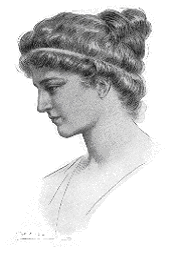
Hypatia of Alexandria, born in 350 AD, was the first woman to make a substantial contribution to the development of mathematics that are still known. Hypatia was the daughter of the mathematician and philosopher Theon of Alexandria and it is fairly certain that she studied mathematics under the guidance and instruction of her father. At the university in Alexandria, she was a famous lecturer in mathematics and philosophy, but it is rather unknown if she held an actual teaching position. Hypatia came to symbolize learning and science which the early Christians identified with paganism. However, among the pupils who she taught in Alexandria there were many prominent Christians. One of the most famous is Synesius of Cyrene who was later to become the Bishop of Ptolemais. Hypatia became a victim of the prejudice of her time. There were periodic outbreaks of violence, and during one of these incidents Hypatia was killed by a mob of Christian fanatics.
Sources:
http://www-history.mcs.st-and.ac.uk/Biographies/Hypatia.html
Musser, Gary. Burger, William. Peterson, Blake. Mathematics For Elementary Teachers: A Contemporary Approach, 6th ed.; Wiley.
Katherine Johnson

Katherine Johnson was a remarkable mathematician born on August 26, 1918 in White Sulfur Springs, West Virginia. From a young age, she was intelligent and curious. By the age of 13, Johnson attended highschool, then graduated with highest honours from the State College at the age of 18. In 1939, she was handpicked by the state's president to be one of the first three black students to attend the graduate schools at West Virginia University. She studied math, but left soon after to start a family.
In 1952, Johnson heard about open positions at the all-black West Area Computing section at the National Advisory Committee for Aeronautics’ (NACA’s) Langley laboratory. Just two weeks into her tenure, she was assigned to a project in the Maneuver Loads Branch of the Flight Research Division. She spent the next four years analyzing data from flight tests and worked on the investigation of a plane crash caused by wake turbulence.
Johnson would go on to make numerous significant contributions to space missions. She did trajectory analysis for Alan Shepard’s May 1961 mission Freedom 7. Most notably, she performed calculations for the Apollo 11 mission of 1969, which sent the first three men to the Moon. Johnson authored or co-authored 26 reports and retired in 1986. In 2015, at age 97, President Barack Obama awarded her the Presidential Medal of Freedom and in 2016, NASA named a building after her. Katherine Johnson died on February 24, 2020, but her legacy will never be forgotten.
Sources:
https://www.nasa.gov/content/katherine-johnson-biography
https://www.britannica.com/biography/Katherine-Johnson-mathematician
Pierre-Simon Laplace
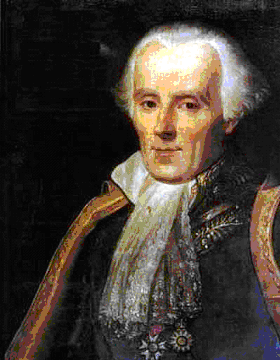
Pierre-Simon Laplace was a French mathematician and astronomer who was born on March 23, 1749 and died on March 5, 1827 without whom mathematical astronomy and statistics would be nowhere near as advanced as they are today. He is often called the Newton of France. He wrote a five-volume summary of his work called Mécanique Céleste from 1799 until 1825.
He was sent to the University of Caen by his father to read theology when he was old enough. He didn't graduate in theology, but left for Paris instead when encouraged by two enthusiastic mathematics teachers to follow in their footsteps. Impressing d'Alembert by being able to solve difficult mathematics problems quickly, he was secured a position at the école Militaire. Secured with money, he then began his research.
He has much named after him - Laplace's equation, Laplace transform and Laplacian differential operator to name a few. He was also one of the first scientists to suggest that black holes exist. He became a count in 1806 and was named a marquis in 1817, being married with children by then.
Sources:
http://www-history.mcs.st-and.ac.uk/Biographies/Laplace.html
http://en.wikipedia.org/wiki/Pierre-Simon_Laplace
Gottfried Leibniz
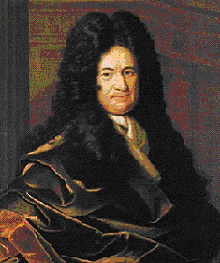
Gottfried Leibniz was a German mathematician and philosopher born on July 1 1646. He occupies a prominent place in the history of mathematics and philosophy. He was the son of Friedrich Leibniz, a professor of moral philosophy at Leipzig. Leibniz's mother was Catharina Schmuck, the daughter of a lawyer and Friedrich Leibniz's third wife. However, Friedrich Leibniz died when Leibniz was only six years old and he was brought up by his mother.
At the age of seven, Leibniz entered the Nicolai School in Leipzig. Although he was taught Latin at school, Leibniz had taught himself far more advanced Latin and some Greek by the age of 12, driven by his interest in reading his father's books. As he progressed through school he was taught Aristotle's logic and theory of categorising knowledge. Leibniz was clearly not satisfied with Aristotle's system and began to develop his own ideas on how to improve on it. Later in life, Leibniz recalls that at this time he was trying to find an order to the logical truths which, although he did not know it at the time, were the ideas behind rigorous mathematical proofs. As well as his school work, Leibniz studied his father's books. In particular he read metaphysics books and theology books from both Catholic and Protestant writers. Leibniz developed the infinitesimal calculus independently from Isaac Newton, and became one of the most prolific inventors in the field of mechanical calculators. Leibniz is also well known for refining the binary number system, which is at the foundation of virtually all digital computers. He died on November 14, 1716.
Sources:
http://www.businessinsider.com/important-mathematicians-modern-world-2012-7?op=1
http://www-history.mcs.st-andrews.ac.uk/Biographies/Leibniz.html
Liu Hui

Liu Hui was a Chinese mathematician who lived in the state of Cao Wei during the Three Kingdoms period (220–280) of China. In 263, he wrote a book with solutions to problems presented in the famous Chinese book of mathematics, "The Nine Chapters on the Mathematical Art". In this book, he was possibly the first mathematician to discover, understand and use negative numbers, undoubtedly before Indian mathematician Brahmagupta. In his commentaries on the Nine Chapters, he presented: An algorithm for the calculation of π (pi), Gaussian elimination, Cavalieri's principle to find the volume of a cylinder and the intersection of two perpendicular cylinders.
Sources:
https://lifethroughamathematicianseyes.wordpress.com/2015/01/17/the-sea-island-mathematical-manual/
Ada Lovelace
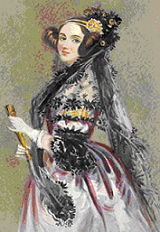
Ada Lovelace, born on December 10, 1815, was an English mathematician and writer. She worked on Charles Babbage's Analytical Engine (an early mechanical general-purpose computer). One of her Notes on the Analytical Engine was the first algorithm intended to be processed by a computer - she was the world's first computer programmer! She is also known as the first person who had a vision of computers going beyond arithmetic calculations. Ada first became interested in mathematics when she believed it would keep her from becoming "insane" like her father - though when she died in 1852, she requested to be buried next to him anyway.
Sources:
http://inventors.about.com/od/lstartinventors/p/Ada_Lovelace.htm
https://en.wikipedia.org/wiki/Ada_Lovelace
Sir Isaac Newton
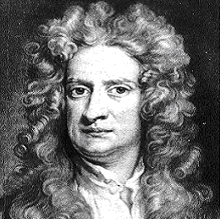
Sir Isaac Newton was an English physicist and mathematician born on January 4 1643 in Woolsthorpe Lincolnshire. He has been widely regarded as one of the most influential scientists of all time and as key figure in the scientific revolution. Newton formulated the laws of motion and gravitation, built the first practical reflecting telescope, formulated an empirical law of cooling, and studied the speed of light. He also made contributions to optics and shares credit with Gottfried Leibniz for the invention of infinitesimal calculus.
By far, Newton's most famous story is that when he developed the law of gravity. Young Isaac Newton first became interested in the force of gravity one day as he sat in contemplation under an apple tree and was suddenly struck on the head by a falling apple. The incident left Newton with a sore skull and a remarkable idea: what if gravity, the force that pulled apples out of trees, actually reached as high as the moon? From here, it was a short leap to the concept that Earth's gravity was responsible for keeping the moon in orbit and that the Sun's gravity was responsible for keeping the planets in orbit.
In 1687 Newton published his book Philosophiæ Naturalis Principa Mathematica "Mathematical Principles of Natural Philosophy" laid the foundations for most of classical mechanics and where he disclosed to the public his law of universal gravitation. Newton died on March 20, 1727.
Sources:
Burton, D.M. The History of Mathematics: An Introduction, 5th ed.; McGraw-Hill: New York, 2003.
http://www.newton.ac.uk/newtlife.html
http://www.bbc.co.uk/history/historic_figures/newton_isaac.shtml
http://www.dctech.com/eureka/short-stories/newton.php
http://en.wikipedia.org/wiki/Isaac_Newton
Emmy Noether
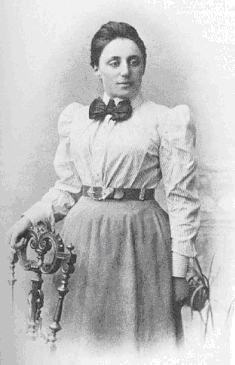
Emmy Noether, born in 1882, was a German mathematician who is well known for her incredible contributions to abstract algebra and theoretical physics. She was described as the most important woman in mathematics since she transformed the theories of algebras, rings, and fields.
She was initially going to teach English and French as she was qualified, but studied mathematics where her mathematician father taught at the University of Erlangen. In 1915, she joined the mathematics department at the University of Göttingen. Noether moved to the United States to work at Bryn Mawr College in Pennsylvania when she was dismissed from her university position for being Jewish. She died in 1935 four days after undergoing surgery for an ovarian cyst.
Sources:
Musser, Gary. Burger, William. Peterson, Blake. Mathematics For Elementary Teachers: A Contemporary Approach, 6th ed.; Wiley.
https://en.wikipedia.org/wiki/Emmy_Noether
Blaise Pascal
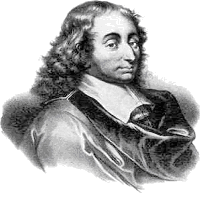
Blaise Pascal was born on June 19, 1623 in Clermont-Ferrand, France. Pascal was a French mathematician, physicist, inventor writer and Christian philosopher. He was a child prodigy who was educated by his father, a tax collector, in Rouen. Pascal's earliest work was focused on applied natural sciences where he made important contributions to the study of fluids.
In 1642, at the age of 18, inspired by the idea of making his father's job of calculating taxes easier, Pascal invented the pascaline, which is an early calculator. The pascaline was a numerical wheel calculator with eight movable dials, each representing a numerical digit, such as ones, tens, and hundreds. The pascaline calculator was proficient at carrying simple operations such as addition, subtraction, multiplication, and division.
Pascal continued to influence mathematics throughout his life. In 1653, his Traité du triangle arithmétique-Treatise on the Arithmetical Triangle was used as an efficient presentation for binomial coefficients, and it is now a day's known as Pascal's triangle. Initially, Pascal read about this triangle in a Chinese book. He studied it rigorously, and is credited by having the honour of this triangle being in his name.
Pascal struggled with insomnia and a painful digestive disorder called dyspepsia from the time he was a teen, and over the years, Pascal's constant work took a toll on his already fragile health.
Pascal died from malignant stomach tumor on August 19, 1662. By that time, the tumor had spread into his brain. He was 39 years old at the time of his death.
Sources:
http://www-history.mcs.st-andrews.ac.uk/Mathematicians/Pascal.html
Conway, John. Guy, Richard. The Book of Numbers. Copernicus Books.
http://en.wikipedia.org/wiki/Blaise_Pascal
Plato
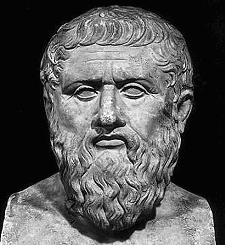
Plato was born to a wealthy family and was a student of the great philosopher Socrates. He was born in Athens, Greece, in 428 BC, and he is considered one of the most important Greek philosophers of history. Plato founded the Academy of Athens - it was an institution devoted to research and instruction in philosophy and the sciences. In fact, the sign above the Academy's entrance read "Let no-one ignorant of geometry enter here". There, students focused on important questions such as "What is the self?" and "What is human nature?". Aristotle was not only Plato's first student, but also one of his best. His works on philosophy, politics and mathematics were very influential and laid the foundations for Euclid's systematic approach to mathematics.
Plato studied the ontological status (categories of being) of mathematical objects. He is best known for his identification of the so-called Platonic Solids: the symmetrical, 3-dimensional tetrahedron, cube, octahedron, dodecahedron and icosahedron.
Sources:
Burton, D.M. The History of Mathematics: An Introduction, 5th ed.; McGraw-Hill: New York, 2003.
http://www.ourcivilisation.com/smartboard/shop/warnerr/plato.htm
http://www.storyofmathematics.com/greek_plato.html
Pythagoras of Samos
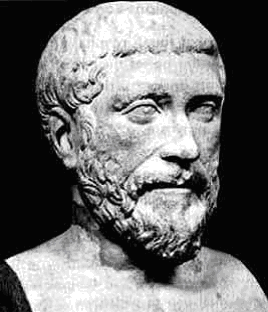
Pythagoras was a Greek mathematician born between 580 and 569 B.C. on the Aegean island Samos. Our knowledge of the life of Pythagoras is scanty, and little can be said with certainty. The information known to date about Pythagoras has been filtered down from early writers who competed with each other in inventing fables concerning his travels, miraculous powers, and teachings. Pythagoras founded a school in southern Italy; this school, considered an academy of philosophy, mathematics, and natural science developed into a closely interweaved brotherhood with secret rites and observances. The school tried strictly to regulate the diet and way of life of its members, and to impose a common method of education. The students of this school concentrated in four subjects of study: arithmetic, geometry, music, and astronomy. When Pythagoras was about 60 years old, he married one of his students, Theano. She was a remarkably able mathematician who inspired Pythagoras during the latter years of his life, and also contributed to broadcast his teaching system after his death. Long after Pythagoras' death in 500 B.C, the brotherhood continued to exist for at least two more centuries. Pythagoreans had strange initiations, rites and prohibitions. For example, they refused to eat beans, drink wine, and pick up anything that had fallen, or stir a fire with an iron. They insisted, in addition to these curious taboos, on a life of virtue, especially of friendship. The five pointed star, or pentagram, was used as a sign whereby members of the brotherhood could recognize one another.
Pythagoras is well known by his contribution in the area of geometry, and has been accredited with the Pythagorean Theorem within geometry. This theorem states that in a right- angled triangle the area of the square on the hypotenuse (the longest side of a right angled triangle) is equal to the sum of the areas of the squares of the other two sides, that is c2=a2+b2.
Sources:
Burton, D.M. The History of Mathematics: An Introduction, 5th ed.; McGraw-Hill: New York, 2003.
Musser, Gary. Burger, William. Peterson, Blake. Mathematics For Elementary Teachers: A Contemporary Approach, 6th ed.; Wiley.
http://www-groups.dcs.st-and.ac.uk/history/Biographies/Pythagoras.html
http://en.wikipedia.org/wiki/Pythagoras
Alan Turing
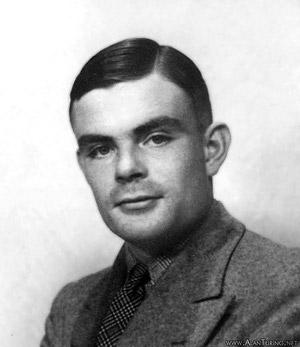
Alan Turing, born on June 23, 1912, was a British mathematician, logician, cryptanalyst, and computer scientist. He gave definitions of the concepts of algorithm and computation with his Turing machine, which is essentially a model of a computer. He was also responsible for decoding German messages during World War II.
After World War II, he designed the ACE at the National Physics Laboratory, which is a stored-program computer. He then helped develop Manchester computers at Manchester University, ultimately leading him to become fascinated by mathematical biology, writing several papers on this subject.
His homosexuality leaded to him being prosecuted in the United Kingdom in 1952. He accepted being injected with female hormones rather than going to jail. He died on June 7, 1954 due to cyanide poisoning. Whether it was suicide or an accident is still unknown to date. However, he was found dead with a half-eaten apple beside him, and he was a big fan of Snow White and the Seven Dwarfs... enough said.
Sources:
http://en.wikipedia.org/wiki/Alan_Turing
Zu Chongzhi
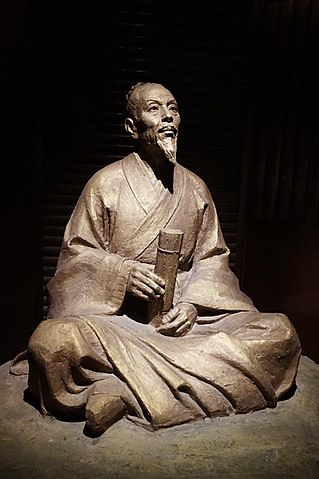
Zu Chongzhi (429-500 AD), courtesy name Wenyuan, was a Chinese mathematician, astronomer, writer and politician during the Liu Song and Southern Qi dynasties.
One of his famous achievements is deriving two approximations of pi, (3.1415926535897932...) which held as the most accurate approximation for π for over nine hundred years. His best approximation was between 3.1415926 and 3.1415927, with 355/113 (密率, close ratio) and 22/7 (約率, approximate ratio) being the other notable approximations. He obtained the result by approximating a circle with a 24,576 (= 213 × 3) sided polygon. This was an impressive feat for the time, especially considering that the device Counting rods he used for recording intermediate results were merely a pile of wooden sticks laid out in certain patterns.





Follow or subscribe for updates: